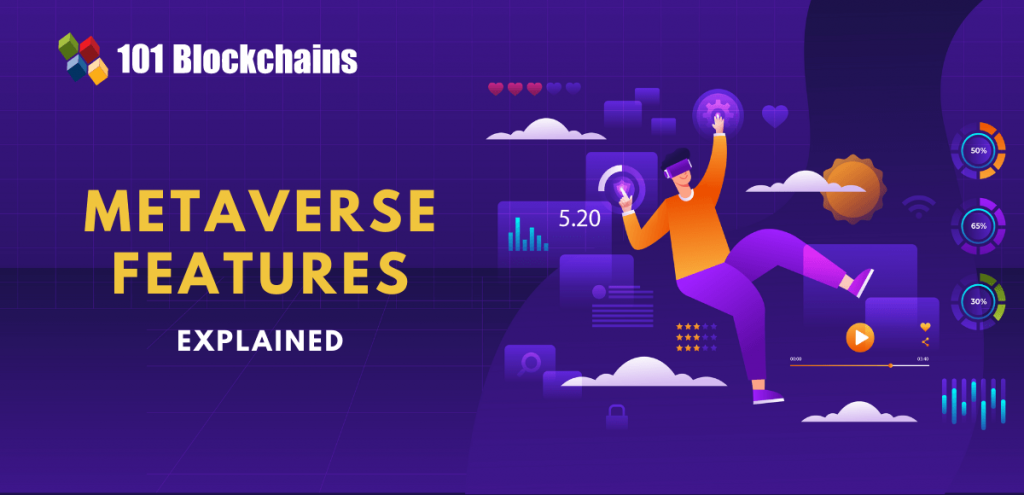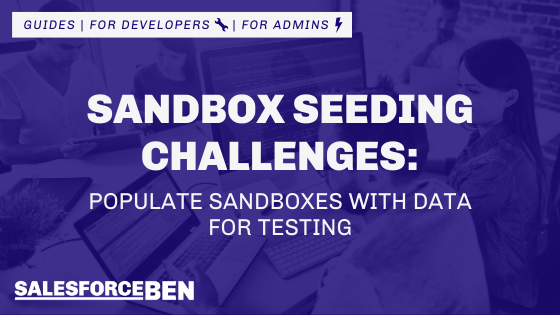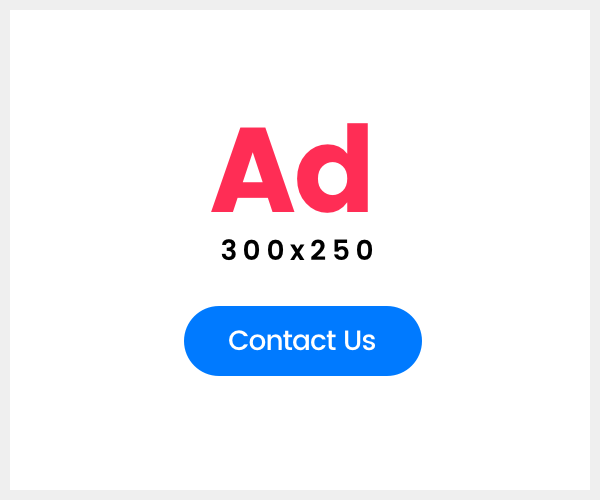Desk of Contents:
- What’s Sandbox Metaverse?
- A Brief History of the Sandbox
- How Does the Sandbox Work?
- How to Get Started in the Sandbox?
- Exploring the Sandbox Metaverse: Features and Opportunities
- Why is the Sandbox Metaverse Popular?
- Sandbox Metaverse vs. Other Virtual Worlds
- Can you make money with The Sandbox?
- Challenges of the Sandbox Metaverse
- The Future of the Sandbox Metaverse
Imagine a world where you can buy land, create unique experiences, and trade your creations, all within a virtual space. Welcome to The Sandbox Metaverse, a decentralized platform where imagination meets blockchain. Whether you’re a gamer, an artist, or an entrepreneur, the Sandbox offers endless opportunities to build, explore, and monetize your virtual dreams.
In this blog, we’ll delve into the Sandbox Metaverse‘s ins and outs, exploring its history, features, mechanics, and why it’s a revolutionary player in the metaverse space.
What is the Sandbox Metaverse?
Picture Courtesy: mpost.io
The Sandbox Metaverse is a blockchain-based virtual world where users can create, own, and monetize their gaming experiences. Powered by Ethereum and later integrating Polygon for scalability, the Sandbox merges gaming with decentralized finance (DeFi) and non-fungible tokens (NFTs).
Unlike traditional games where content is owned by developers, the Sandbox gives players full ownership of their creations, facilitated through NFTs. This makes the platform not just a game but a digital economy.
A Brief History of the Sandbox:

Picture Courtesy: youtube.com>CameronExplores
The Sandbox’s journey is a fascinating evolution from a humble mobile game to one of the most dynamic blockchain-based metaverse platforms. Here’s a glimpse into its history:
1. The Beginnings (2012): The Mobile Game Era
The Sandbox was first developed as a 2D mobile game by Pixowl Inc. in 2012, where the idea was simple yet addictive: players created, destroyed, and shared voxel-based worlds. In those earlier versions, it closely resembled other titles such as Minecraft, focusing on user creativity and sandbox-style gameplay.
2. The Blockchain Pivot (2018):
Animoca Brands, a company that has long been a leader in blockchain gaming, acquired Pixowl and transformed the Sandbox into a decentralized, blockchain-driven metaverse. The aim was to give users real ownership of their creations with the power of NFTs.
3. SAND and LAND Launch (2020):
The SAND token was the native cryptocurrency of the Sandbox, meant to propel transactions, governance, and staking within the ecosystem.
The first LAND sales took place, which enabled users to buy virtual real estate as NFTs. LAND parcels quickly became a fundamental part of the platform, and people and brands flocked.
Together, LAND ownership and SAND transactions transformed Sandbox into more than just a game-it became the very thriving virtual economy.
4. Significant Partnerships and Growth (2021-2023):
Through key partnerships, Sandbox established itself as the leader in the metaverse by working with:
Atari: Atari on developing retro gaming experiences.
Snoop Dogg: Snoop Dogg to develop a Snoop-themed mansion and stage virtual concerts.
Adidas: Adidas on branded virtual spaces and collectibles.
The Walking Dead: The Walking Dead on an immersive, zombie-filled gameplay experience.
5. Scaling the Vision (2024+):
Scalability Enhancements through the inclusion of the Polygon network to decrease transaction costs and expedite speed. Community Growth through features that empower creators and players to shape the metaverse. Tools Innovations through constant updates on VoxEdit and Game Maker for even more sophisticated creations.
How Does the Sandbox Work?

Picture Courtesy: thebitcoinmagazine.org
The Sandbox operates as a decentralized metaverse platform where users can create, own, and monetize their digital experiences. It seamlessly integrates blockchain technology, user-generated content, and gamification to offer a robust ecosystem for players, creators, and brands. Here’s a detailed look at how it works:
1. Core Components of the Sandbox Ecosystem:
SAND is literally the lifeblood of the Sandbox ecosystem. It is a native cryptocurrency, making it eligible for all transactions within the platform. Several use cases for SAND include buying LAND, purchasing in-game assets, payment of experiences, attending events, and participating in the governance of the ecosystem through voting on decisions to be made on the platform through a Decentralized Autonomous Organization (DAO), as well as staking for earning.
LAND is virtual real estate that exists in the form of NFTs. Each piece of LAND is unique and holds different potential. Players can buy LAND to build and host games, experiences, or virtual galleries. Landowners can monetize their parcels by renting them to other users or charging fees for access to their creations. The finite number of LAND parcels, that is, 166,464 in total, is added to the value and desirability of each piece.
VoxEdit is a 3D voxel modeler that is specifically used to help users build digital assets. Users can design characters, objects, and animations. Upon completing their creations, they can mint them into NFTs and sell them in the marketplace of the Sandbox. Anyone can use VoxEdit without any experience in 3D modeling.
The Game Maker is a no-code platform used to build games and interactive experiences. Drag-and-drop mechanics are present, along with pre-made templates for quick development, and there is room for full customization. The users can share their creations with the community, attract players, and earn revenue from them.
The marketplace based on Sandbox is a place for buying and selling NFT assets. Here, creators could sell voxel creations, avatars, or even items, while buyers could buy unique in-game assets or collectibles. The marketplace is decentralized with transparency and security.
2. Blockchain Technology Underlying the Sandbox:
The Sandbox uses blockchain to ensure true ownership, security, and transparency. Initially, it was constructed on the Ethereum network and therefore leverages the robustness of the whole smart contract capability of the platform. However, due to high gas fees and scalability issues, the integration with Polygon meant having faster and cheaper transactions within it. All NFTs in the Sandbox are in accordance with ERC-721 and ERC-1155 standards, making them rare and collectible as well as transferable.
3. How to Use the Sandbox:
Transactions in the Sandbox are based on SAND. The players, at a sale, will be allowed to pay in SAND or even Ethereum to buy LAND NFTs. They can sell their creation or LAND NFTs in the marketplace for earning SAND or other cryptocurrencies. Users who have SAND tokens can earn passive rewards with extra tokens or even exclusive assets through staking.
4. Setting Up and Playing in the Sandbox:
Creators can use the tools of VoxEdit and Game Maker to design assets and create immersive experiences. They can even mint their creations as NFTs and monetize them through sales or access fees. Players, for their part, have a variety of experiences and prospects: purchasing or renting LAND, exploring games and experiences, and earning rewards through play-to-earn mechanics with community events, contests, and social hubs.
5. Decentralization and Community Governance:
As a decentralized metaverse, the Sandbox empowers its users through a DAO. SAND token holders play a key role in decision-making, from platform updates to fund allocation. The community-driven approach allows creators and players to collectively shape the platform’s future.
6. Monetization Opportunities:
The idea of the Sandbox is focused on creativity and engagement. Players can undertake play-to-earn mechanisms to be able to get SAND tokens. Artists and creators can mint and sell voxel-based NFTs. Landowners can acquire revenue by leasing it or hosting paid events. Users can organize concerts, exhibitions, or educational events in the virtual space to receive revenue.
7. Interoperability and Future Growth:
The Sandbox will become increasingly interoperable with other metaverse platforms so that there are no seams in the digital experience when people step between virtual worlds. Perhaps future development will involve cross-platform sharing of assets and identities between metaverses, as well as AI-driven tools and support for VR to increase immersion.
How to Get Started in the Sandbox?

Picture Courtesy: youtube.com>RCSU
The Sandbox is an exciting gateway to a decentralized virtual world where you can play games, create experiences, or own virtual land. Whether you’re a player, creator, or investor, joining this metaverse is simple and accessible. Here’s a step-by-step guide to help you get started.
Step 1: Create an Account
Go to sandbox.game and sign up using your e-mail or connect a digital wallet like MetaMask. A wallet is necessary for secure transactions and NFT ownership.
Step 2: Customize Your Avatar
Create your personal avatar to experience the Sandbox world. Through the avatars’ customization tools, you create a unique look that represents you in the metaverse.
Step 3: Get SAND Tokens
Obtain SAND on an exchange like Binance or Coinbase and transfer the tokens to your wallet. SAND is used in transactions, including buying LAND or assets.
Step 4: Explores the Marketplace
Visit the Sandbox marketplace to browse NFTs, in-game assets, or LAND. Utilize your SAND to purchase items that you can utilize within the platform and even trade for additional value.
Step 5: Learn to Create
Download VoxEdit to design assets or use the Game Maker to build the most interactive experience. The best part is that both are free and quite user-friendly.
Step 6: Buy LAND (Optional)
If you’re a businessperson, buy LAND NFTs to construct and monetize your virtual estate. It can host games, events, or galleries.
Step 7: Join the Community
Join the Sandbox community on Discord or Telegram and participate in events, contests, and social hubs to gain valuable insights and networking.
Step 8: Play, Create and Earn
Discover user-generated games, design your own experiences, and monetize your creativity. The play-to-earn model ensures you can earn SAND tokens through your actions.
Exploring the Sandbox Metaverse: Features and Opportunities

Picture Courtesy: 101blockchains.com
The Sandbox isn’t just a virtual playground; it’s a dynamic ecosystem brimming with opportunities for gamers, creators, and investors alike. Its unique blend of gaming, blockchain, and community-driven creativity makes it a standout platform in the metaverse landscape. Let’s dive into its features and the exciting opportunities it offers.
1. Decentralized Governance:
The Sandbox is decentralized through a Decentralized Autonomous Organization (DAO). The SAND token holders are able to vote on whatever decisions the platform, fund allocations, and feature development will be. This makes sure that the future of the platform is shaped in an interactive dialogue between the community and themselves.
2. Integration with Blockchain Technology:
It focuses on enhancing transparency, security, and decentralization through blockchain integration. Originating on Ethereum, the platform now also uses Polygon to help engage in faster and cheaper transactions. NFTs are always based on standards of ERC-721 and ERC-1155, which help preserve uniqueness and transferability. The blockchain technology supports the entire ecosystem, from the ownership of assets to transactions, creating a trustless and secure environment.
3. Opportunities for Gamers:
It is an open sandbox of ample opportunity for gamers to play, earn, and have fun. With user-generated games and adventures, quests, and challenges to gain SAND tokens, and immersive environments where creativity blends with gameplay, the competitive players get an opportunity to compete on tournaments and also on the leaderboard while giving their all to win some good rewards-a different entertainment level in the game.
4. Investment Opportunities:
For investors, the Sandbox offers various profitable investments. For instance, LAND is a virtual real estate that has become quite prized with limited availability and increasing demand. Then, native SAND tokens will increase in value with the development of the Sandbox. Finally, rare and exclusive NFTs can be sold at a higher price, making them a valuable investment for collectors. These investments give investors the possibility of diversifying their portfolio while engaging with the Sandbox’s evolving ecosystem.
5. A Hub for Brands and Businesses:
The Sandbox serves as a powerful platform for brands and businesses to expand their presence in the digital realm. Companies can purchase LAND to create branded experiences, host events, or build virtual stores. Brands like Adidas, Atari, and Snoop Dogg have already partnered with the Sandbox, showcasing its potential for marketing and engagement. This opens a new frontier for businesses to connect with younger, tech-savvy audiences in innovative ways.
6. Educational and Collaborative Potential:
Beyond playing and entertaining, the Sandbox has enormous potential to be an educational resource. The LAND can host virtual classrooms and workshops which may be useful for institutions and educators as a means of having an interactive learning experience. The collaborative potential on the Sandbox allows users to co-create projects, hence teamwork and innovation. Such features make this platform valuable to formal as well as informal learning.
7. Infinite Future Hopes:
The Sandbox is continually evolving, with plans to integrate new technologies and expand its functionality. Virtual reality (VR) support could enhance immersion, bringing players closer to a fully realized metaverse. Partnerships with other metaverse platforms may enable cross-platform interoperability, while AI-driven tools could streamline creation processes, empowering users to build even more complex and engaging experiences. As technology advances, the Sandbox remains at the forefront, offering limitless opportunities for exploration and growth.
Why is the Sandbox Metaverse Popular?
The Sandbox Metaverse is popular because it combines gaming, creativity, and blockchain technology, offering users a decentralized platform where they can create, own, and monetize virtual experiences. Its intuitive tools like VoxEdit and Game Maker make asset creation accessible, while features like NFT ownership and play-to-earn mechanics attract gamers and investors.
1. User-Driven Content Creation: Players have the freedom to create anything they imagine, from simple buildings to complex games.
2. Economic Incentives: The play-to-earn model allows users to monetize their time and creativity.
3. Brand Collaborations: Partnerships with global brands like Warner Music Group and Gucci make the Sandbox a hub for exclusive events and branded experiences.
4. Community Governance: Through a decentralized autonomous organization (DAO), players vote on platform updates and policies using SAND tokens.
Sandbox Metaverse vs. Other Virtual Worlds

Let’s see differences between sandbox metaverse and other metaverse games.
| Feature | Sandbox Metaverse | Decentraland | Roblox | Minecraft |
| Core Focus | Blockchain-based gaming and virtual asset ownership | Decentralized virtual social platform with focus on real estate | User-generated gaming experiences for all age groups | Creative sandbox gameplay with an emphasis on construction and exploration |
| Blockchain Integration | Yes, built on Ethereum and Polygon | Yes, built on Ethereum | No | No |
| NFT Support | Full NFT integration for assets, LAND, and creations | Full NFT integration for virtual land and wearables | No | No |
| Monetization | Create, sell, and trade NFTs; play-to-earn mechanics | Sell land and digital assets; build experiences to monetize | Game creators can earn Robux, the in-game currency, by selling items or games | Limited monetization through custom servers and mods |
| Ownership | True ownership of virtual assets via blockchain | True ownership of land and NFTs via blockchain | Users do not own in-game assets, as Roblox owns the platform | No ownership; players have rights only within the ecosystem |
| Accessibility | Free tools like VoxEdit and Game Maker for creators; browser-based and desktop versions | Browser-based access, desktop, and VR support | Apps available on desktop, mobile, and gaming consoles | Available on PC, consoles, and mobile devices |
| Community Engagement | Highly social with events, multiplayer games, and collaborative tools | Social features and events like virtual meetups and conferences | Strong social interaction through games and forums | Collaborative gameplay through servers; lacks integrated social tools |
| Governance | Decentralized Autonomous Organization (DAO) with community voting | DAO for governance and platform decisions | Centralized governance managed by Roblox Corporation | Fully centralized governance managed by Mojang (Microsoft) |
| Graphics Style | Voxel-based 3D graphics | Polygonal 3D graphics | Cartoonish and diverse styles depending on game creators | Pixelated, block-style visuals |
| Virtual Land | Limited LAND parcels that can be purchased and developed | Limited virtual land available for purchase | No virtual land concept | No virtual land: players build within procedurally generated worlds |
| Revenue Model | Marketplace transactions using SAND tokens and LAND sales | Marketplace transactions using MANA tokens and land leasing | Commission on Robux purchases and in-game transactions | One-time game purchase; some revenue from mods and servers |
| Target Audience | Gamers, creators, and blockchain enthusiasts | Investors, creators, and virtual community builders | Casual gamers and creators, especially younger audiences | Casual gamers and creative builders |
Can you make money with The Sandbox?
Yes, you can make money with The Sandbox through the following ways:
1. Creating and Selling NFTs: Design unique voxel-based assets using VoxEdit, mint them as NFTs, and sell them in the Sandbox Marketplace.
2. Buying and Selling LAND: Purchase virtual land parcels, develop or hold them, and sell later at a profit.
3. Play-to-Earn Mechanics: Earn SAND tokens by completing in-game quests, challenges, or participating in events.
4. Monetizing Games: Create games using the Game Maker tool and charge players for access or earn rewards.
5. Renting LAND: Rent out your virtual property to creators or businesses for passive income.
6. Trading NFTs: Buy and sell rare or exclusive NFTs on the marketplace for a profit.
7. Staking SAND Tokens: Stake SAND to earn rewards, including additional tokens and exclusive NFTs.
Challenges of the Sandbox Metaverse:

Picture Courtesy: salesforceben.com
While the Sandbox is groundbreaking, it faces challenges:
1. High Entry Costs: Buying LAND or SAND tokens can be expensive for new users.
2. Technical Barriers: Requires knowledge of blockchain wallets and NFT transactions, which can deter beginners.
3. Scalability Issues: As user demand grows, network congestion and high gas fees may arise.
4. Competition: Competing with other metaverse platforms like Decentraland, Roblox, and Minecraft.
5. Adoption Hurdles: Limited mainstream adoption of blockchain-based virtual worlds.
6. Security Concerns: Risk of hacks or scams in NFT trading and wallets.
The Future of the Sandbox Metaverse:

The future of the Sandbox Metaverse looks promising as it continues to evolve with advancements in blockchain technology and user-driven content creation. With plans for virtual reality (VR) integration, enhanced interoperability with other metaverse platforms, and growing partnerships with major brands, the Sandbox is poised to expand its ecosystem. Its play-to-earn model, decentralized governance, and focus on empowering creators ensure sustained interest from gamers, investors, and businesses. As mainstream adoption of metaverses grows, the Sandbox is well-positioned to lead the charge in shaping immersive digital experiences.
The Sandbox Metaverse isn’t just a game; it’s a platform that empowers creativity, fosters community, and offers financial opportunities. Whether you’re an artist, a developer, or a casual gamer, the Sandbox invites you to be part of its growing universe.
What would you create if you had a piece of the Sandbox? Share your ideas in the comments below!
For more insights and updates on Web3, be sure to subscribe to our newsletter. Stay informed on the latest trends and developments in the decentralized world!
You might also like
More from Web3
Nigel Farage Pledges to Slash Crypto Capital Gains, Force UK Bitcoin Reserve
In short UK politician Nigel Farage pledged this week to cross a pro-crypto invoice if made prime minister. Farage stated he …
Bored Ape Yacht Club Maker Sells Moonbirds IP to Gaming Startup
In short Gaming startup Orange Cap Video games acquired the Moonbirds NFT IP from Yuga Labs. Bored Ape Yacht Membership creator …










